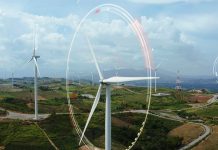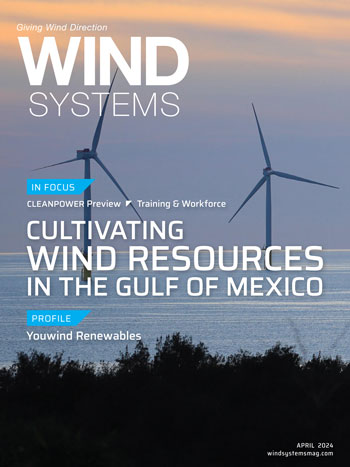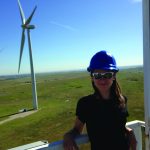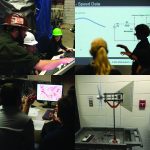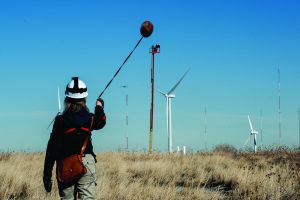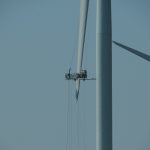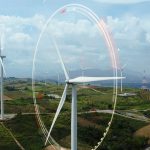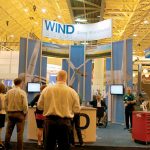The global wind turbine operation and maintenance market is projected to grow from $36.27 billion in 2022 to $63.82 billion by 2029, at a CAGR (compound annual growth rate) of 8.4 percent, according to Fortune Business Insights as the industry takes an increasingly leading role in the global energy supply.
However, corrosion threatens this growth since it can often go unseen and hinder the power generation, operation, and uptime of wind turbines. The corrosion is typically found in locations such as wind-turbine AC/DC motors and DC generators, hydraulic and lubricating systems, switchgears, control cabinets, and electrical enclosures.
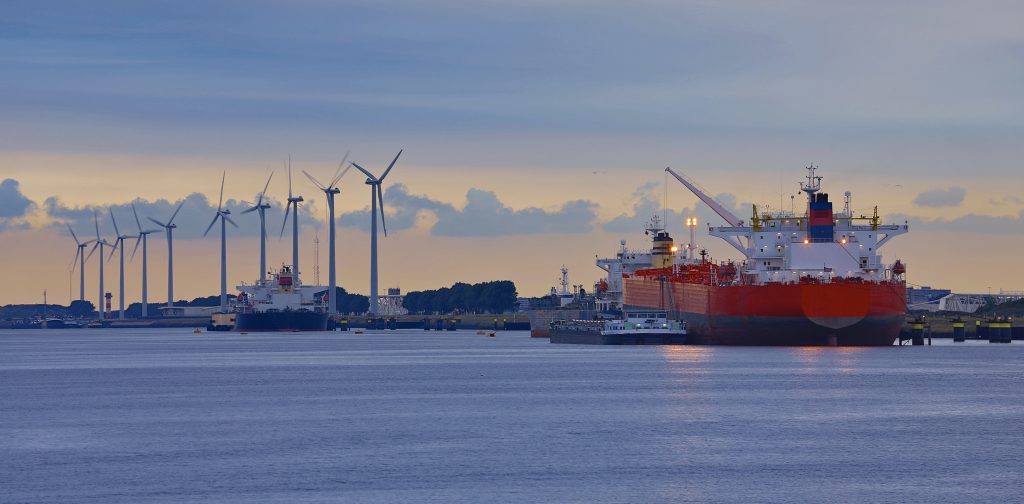
The wind-power industry has long fought against metal corrosion leading to significant costs over time. (Courtesy: Laser Photonics)
Consequently, effective corrosion maintenance plays a key role in the efficient, profitable operation of wind turbines. Although wind turbines have an average life expectancy of 30-plus years, the high-performance coatings used have an expected lifespan of only eight to 10 years, so a reliable solution for coating removal and surface conditioning is essential.
The challenge is traditional methods of removing corrosion can be messy, laborious, time consuming, and can even pose serious health hazards.
Today, one of the easiest to use, most effective alternatives in the war against corrosion is the increasingly important category of industrial-grade, clean-technology lasers.
With this approach, precision laser-based systems are used to remove corrosion, contaminants, paint, and residues with a high-energy laser beam that leaves the substrate unaffected. Preparation and cleanup time are minimal, and the low-maintenance equipment can last decades. The technology minimizes operator exposure to potential environmental health hazards. In addition, no consumables are necessary.
Corrosion and the Limits of Conventional Control
Any industry with metal infrastructure, processing equipment, or products exposed to water, fluids, moisture, or atmospheric humidity continually fights corrosion, which causes the deterioration and loss of a material and its critical properties due to chemical and electrochemical reactions of the exposed surface with the surrounding environment. Corrosion affects the microstructure, mechanical properties, and physical appearance of the materials.
The direct cost of corrosion includes a loss of materials, equipment, and production, plus the cost of repair, maintenance, and replacement. Additional losses can result from accidents, injuries, and even loss of life as well as payments to repair environmental damage.
Within the industry’s continual struggle against corrosion, one important niche area of corrosion control involves the pretreating of metal surfaces to remove corrosion and contaminants before coating or welding.
Although metal surface pretreatment is a small portion of corrosion control in the wind-power industry, it is crucial to ensure the safety, performance, and longevity of crucial wind turbine components.
Insufficient coating pretreatment can lead to inadequate protection from the environment, leading to potential coating failure, moisture entry, and accelerated corrosion as well as increased maintenance, early replacement, and warranty issues. Similarly, insufficient weld pretreatment to remove corrosion and contaminants can lead to weakened or failed welds and necessary rework as well as substantial safety, liability, and litigation risk.
A More Effective Weapon to Eliminate Corrosion
In the wind-power industry, it is necessary to remove corrosion, residue, oil, grease, or paint before coating components or infrastructure to improve coating adhesion.
Toward this end, laser-based systems have significant advantages over traditional methods, starting with ease of use.
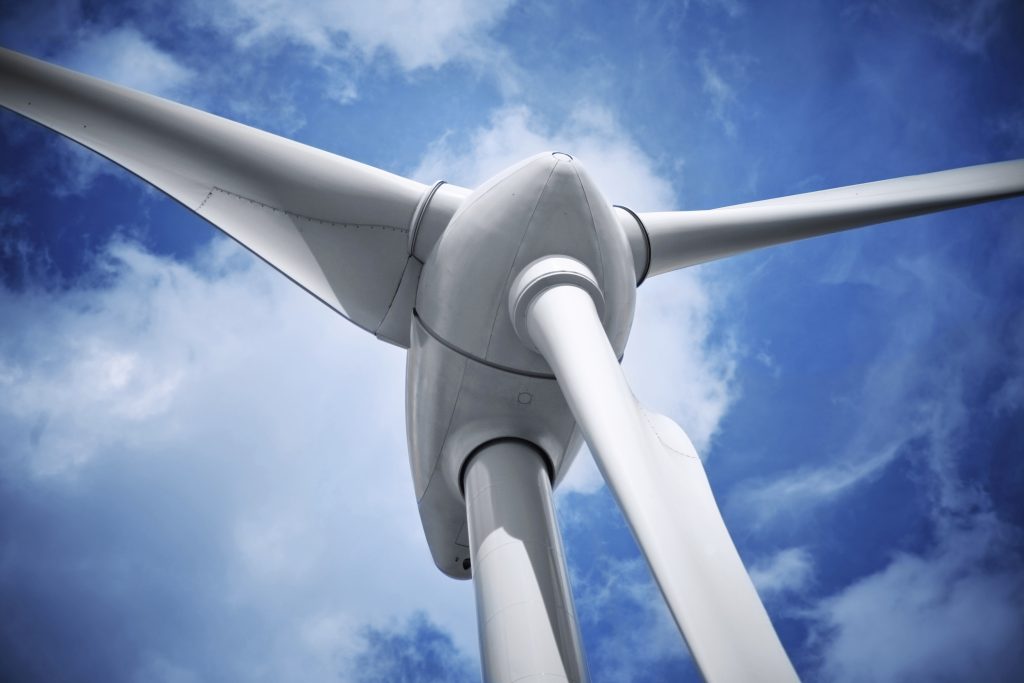
“With laser-based systems, an operator simply points and clicks a high-energy laser beam at the surface,” said Wayne Tupuola, CEO of Orlando, Florida-based Laser Photonics, a leading provider of patented industrial grade CleanTech® lasers for cleaning and surface conditioning. The company’s systems function either as mobile standalone units or can be integrated into production lines.
“The substrate is not affected by the laser, and the systems do not create any mess or byproducts,” he said. “The approach is eco-friendly, energy-efficient, and completes the job in approximately half the time of traditional methods when preparation and cleanup are considered. Also, no consumables are required.”
In the case of Laser Photonics, the laser systems are available in portable and stationary models ranging from 50 to 3,000-watts (a 4,000-watt version is in development) with chamber sizes from 3’ x 3’ in size to 6’ x 12’. The systems can also be installed in manufacturing lines in cabinets or operated by a robotic arm.
The CleanTech lasers are used to refurbish wind-turbine components and infrastructure, such as when removing a previous coating along with any corrosion to facilitate the new coating’s adhesion to the surface. The laser pre-treatment of metal surfaces can also be used to streamline various manufacturing processes by removing any rust from components.
Another common laser application involves pre-weld treatment to remove corrosion, mill scale, residue, and any impurities on the surface of the base material that would compromise the weld’s effectiveness. It is essential to avoid any such contamination on a weld’s surface, which could otherwise lead to a weakening of the weld’s mechanical properties, requiring rework.
Increasing life expectancy
Laser treatment is also used for post-weld cleaning to increase the life expectancy and corrosion resistance of a welded joint.
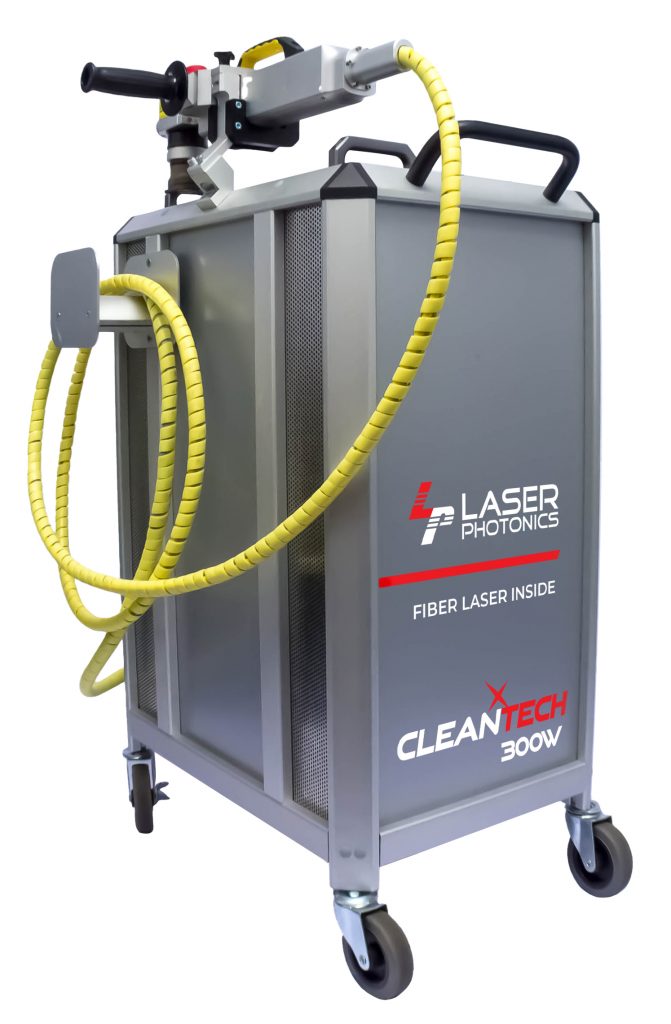
Post-weld cleaning is important for stainless steel as well. The strength of stainless steel allows wind turbines to be built taller and more efficiently while providing corrosion resistance. However, welding can cause a “heat tint,” a discolored, thickened top layer on the stainless steel around the weld bead within the heat-affected zone that compromises corrosion resistance. Removing the heat tinted top layer is necessary to restore stainless steel’s full corrosion resistance.
A further benefit of the laser systems is some of the most advanced units are designed to last for decades. For example, CleanTech laser systems can last for 50,000 to 100,000 hours. In addition, virtually no maintenance is needed after purchase, and no consumables are required.
Given the high cost of corrosion to the wind-power industry and the inherent limitations of typical control methods, lasers are becoming a best practice technique to combat it in facilities and in the field. Laser treatment effectively removes corrosion for many applications, minimizes cleanup time and operator exposure to potential environmental health hazards, lasts for decades, and requires no consumables.


















